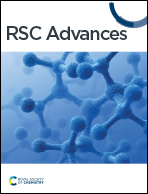A review on development of metal–organic framework-derived bifunctional electrocatalysts for oxygen electrodes in metal–air batteries
Abstract
Worldwide demand for oil, coal, and natural gas has increased recently because of odd weather patterns and economies recovering from the pandemic. By using these fuels at an astonishing rate, their reserves are running low with each passing decade. Increased reliance on these sources is contributing significantly to both global warming and power shortage problems. It is vital to highlight and focus on using renewable energy sources for power production and storage. This review aims to discuss one of the cutting-edge technologies, metal–air batteries, which are currently being researched for energy storage applications. A battery that employs an external cathode of ambient air and an anode constructed of pure metal in which an electrolyte can be aqueous or aprotic electrolyte is termed as a metal–air battery (MAB). Due to their reportedly higher energy density, MABs are frequently hailed as the electrochemical energy storage of the future for applications like grid storage or electric car energy storage. The demand of the upcoming energy storage technologies can be satisfied by these MABs. The usage of metal–organic frameworks (MOFs) in metal–air batteries as a bi-functional electrocatalyst has been widely studied in the last decade. Metal ions or arrays bound to organic ligands to create one, two, or three-dimensional structures make up the family of molecules known as MOFs. They are a subclass of coordination polymers; metal nodes and organic linkers form different classes of these porous materials. Because of their modular design, they offer excellent synthetic tunability, enabling precise chemical and structural control that is highly desirable in electrode materials of MABs.

- This article is part of the themed collection: 2023 Reviews in RSC Advances


 Please wait while we load your content...
Please wait while we load your content...